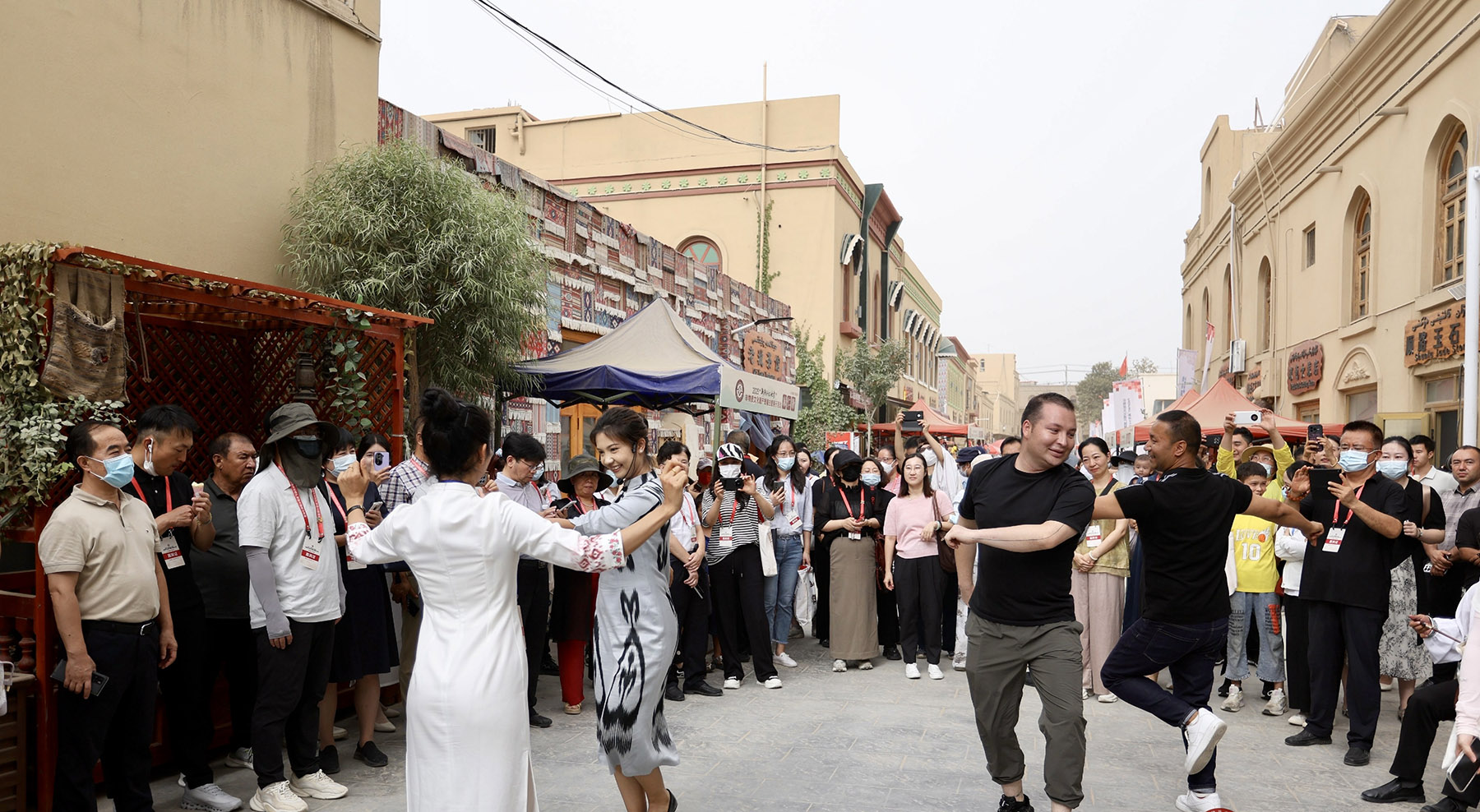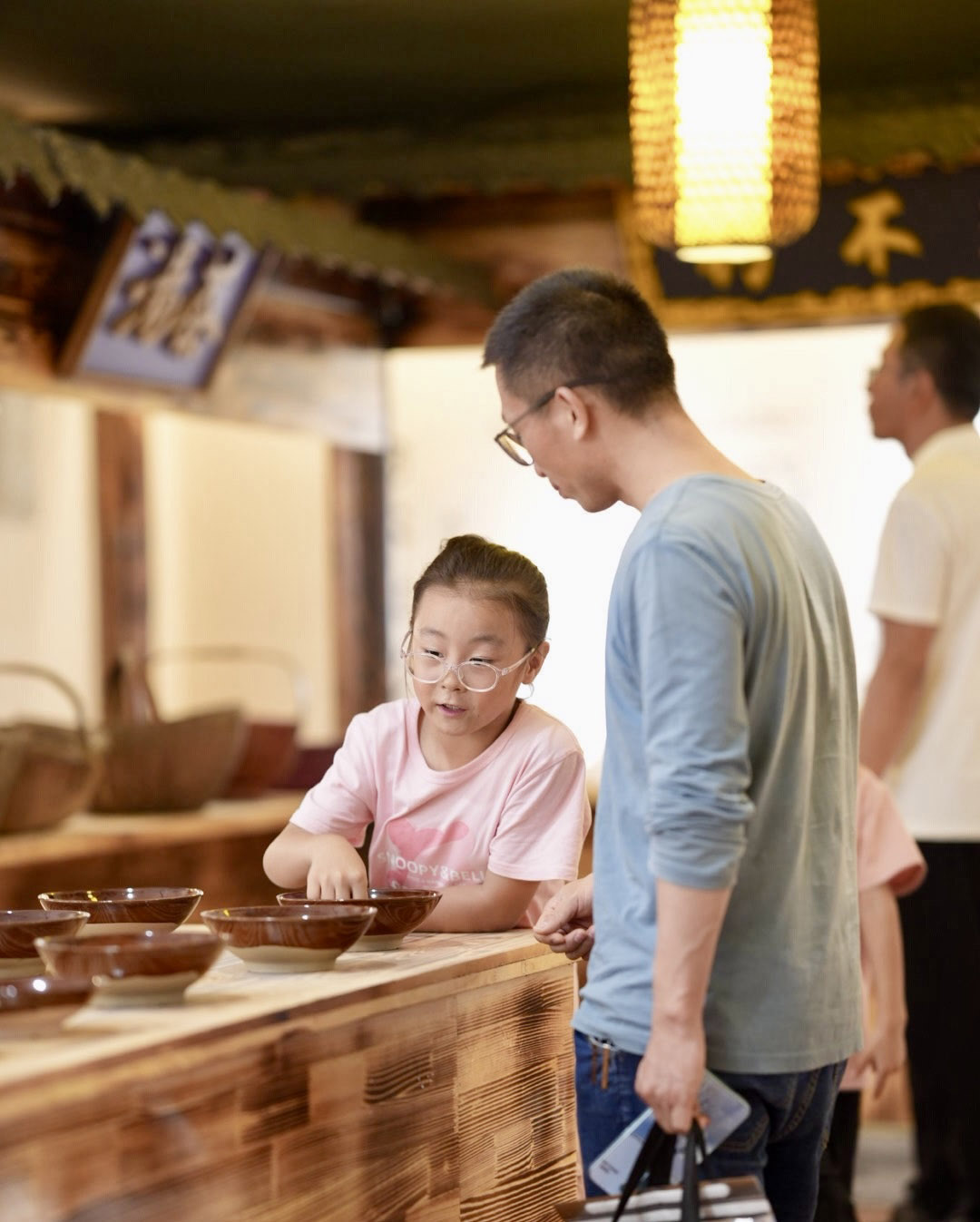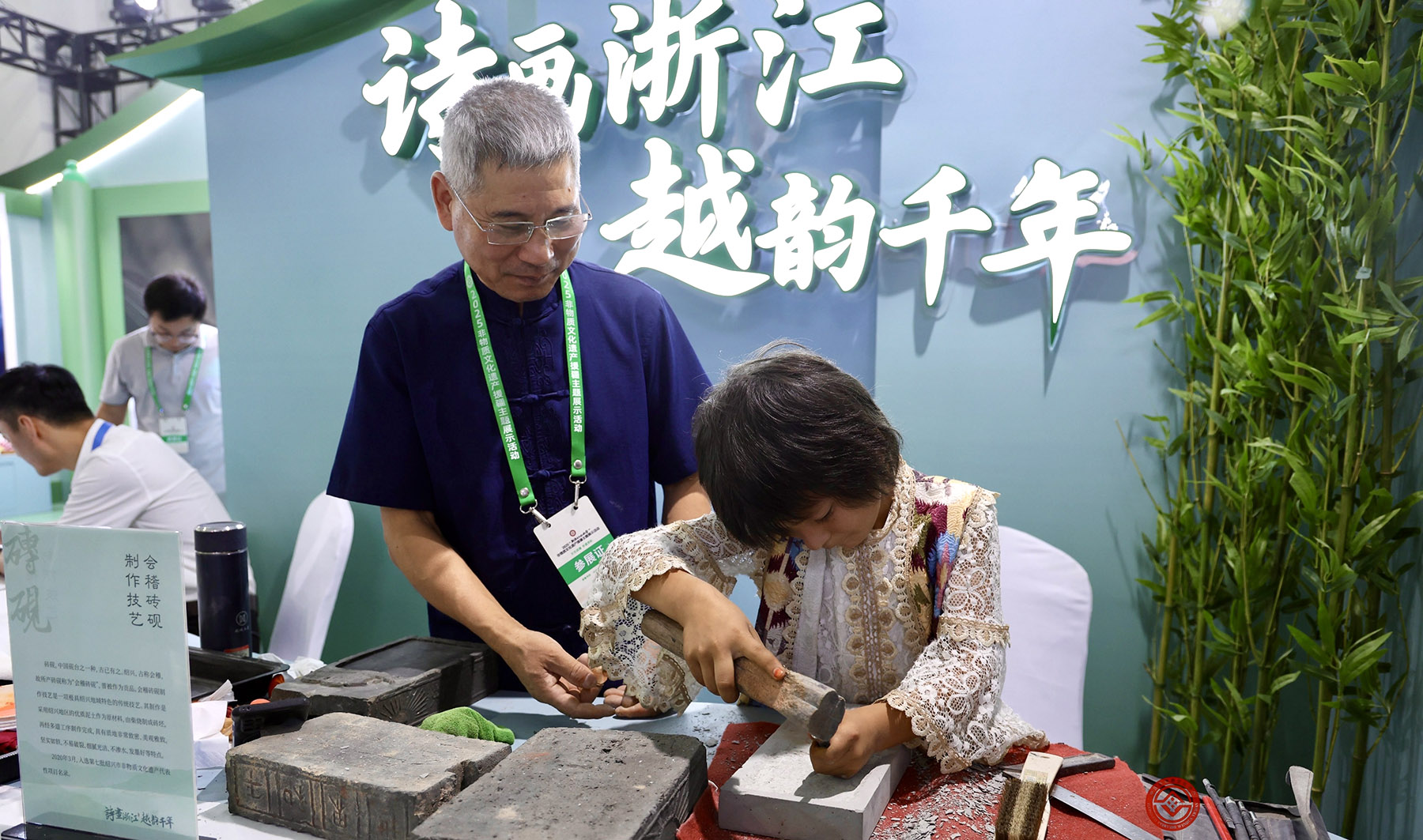From opera to crafts, ICH showcase unites artists, youth and communities through creativity, mentorship and cultural exchange, Yang Feiyue reports in Hotan, Xinjiang.

In a hall adorned with some of Beijing's most distinctive intangible cultural heritage items, Elham Arkin, a young boy of Uygur ethnic group from Hotan, Xinjiang Uygur autonomous region, carefully copies every gesture demonstrated by Li Hongyan, a leading Peking Opera artist.
Bathed in the glow of cloisonne vessels, a finely woven palace carpet and a brightly colored opera costume, Elham practices singing, sweeping his sleeves, and pacing his steps under Li's gentle instruction.
Li had flown six hours from Beijing to Hotan to mentor him.
For Elham, Peking Opera has been both a passion and a dream since he first encountered the traditional stage art in 2018.
"At the time, I didn't even have a phone," he recalls. "I borrowed my brother's to search online. From hanfu and calligraphy to martial arts and tai chi, each interest led me naturally closer to Peking Opera."
READ MORE: Tradition without borders
What first captivated him were the exquisite costumes and melodic singing. As he began to understand the plots and techniques, he grew increasingly appreciative of the subtle beauty of the performances.
"If I had to describe Peking Opera in two words, they would be 'elegant' and 'beautiful'," he says.
Growing up in Xinjiang, however, he found that opportunities for formal training were scarce. Most of the time, Elham learned through videos on Douyin, Bilibili or television programs. "Online resources helped me, but many details — like footwork and gestures — are hard to grasp from a screen," he explains.

That is why he was especially thrilled to learn face-to-face from Li, an accomplished artist with the Mei Lanfang Peking Opera Troupe of the Jingju Theater Company of Beijing in mid-August.
"She corrected my pronunciation and performance mistakes, something I could never achieve just by watching videos," Elham says.
They met during the Xinjiang Is a Nice Place intangible cultural heritage showcase, which opened last Friday in Hotan.
Jointly organized by the Ministry of Culture and Tourism and the Xinjiang government, the event carried the theme Nurturing Xinjiang with Culture, Enriching Life with Heritage.
The main venue, Yotkan folk culture and tourism town, brought together 435 representative ICH programs and 383 inheritors from Xinjiang, the Xinjiang Production and Construction Corps, and 25 other provinces, regions and municipalities.
Through exhibitions, stage performances and cultural fairs, the showcase highlighted the achievements of ICH preservation, transmission and interregional cooperation, while fostering exchanges among different ethnic groups.
Since it began five years ago, the Xinjiang Is a Nice Place ICH showcase has brought together 1,450 inheritors and displayed 1,217 ICH programs. It has become an important platform for advancing cultural initiatives in Xinjiang and strengthening a shared sense of national identity.
Li says she was deeply moved when she heard about Elham, who comes from a modest family.
"I can see how hard he works. That spirit is admirable," Li comments on Elham's performance, adding that she is willing to continue mentoring him online once she is back in Beijing.

Li was one of several artists sent to the ICH showcase in Hotan by the Beijing authorities, who set up a permanent exhibition booth at the main venue that aims to enrich local life with the capital city's distinctive culture.
"Our exhibition features 16 intangible cultural heritage items, ranging from imperial traditions to folk art," says Sun Liqing, coordinator of booth operations.
Visitors can appreciate the Yanjing Bajue (Eight Imperial Handicrafts) items, such as exquisite cloisonne vessels, Tongrentang traditional Chinese medicine, and dough figurines. Many of the works by Beijing artists also incorporate Hotan elements. For instance, the Qing Dynasty (1644-1911) Chinese ink brand Yidege has developed a special ink package featuring Hotan's mulberry paper elements.
At the Beijing booth, an ink artist from Yidege interacts with a local mulberry paper inheritor, Sun adds.
Beijing is one of the three regions, along with Tianjin and Anhui province, that have established permanent cultural spaces at the venue. Designed with both practicality and sustainability in mind, these booths not only serve as exhibition platforms but also as lasting bridges for cultural exchange.
Inside the Tianjin exhibition space, visitors were greeted with distinctive local heritage items, from intricate paper-cutting and tea soup brewed in giant copper teapots to Yangliuqing New Year woodblock prints and Goubuli (Go Believe) steamed buns.
"We have prepared detailed introductions for each heritage item, hands-on interactive installations, and numerous photo-worthy display points to create an immersive environment," says Yang Runze, founder of a cultural company that was commissioned to design the pavilion.

The space serves as a dynamic bridge between Tianjin and Xinjiang local cultures, Yang adds.
One of the most engaging installations is an interactive clapper talk (kuaiban) station, where this signature Tianjin folk art performance comes alive through technology.
"When visitors attempt the traditional clapper rhythm, the installation responds with synchronized digital animations of galloping horses. It's a crowd favorite, and 80 to 90 percent of visitors take part," Yang notes.
The space will regularly host student groups from Tianjin, Beijing and Anhui, as well as local Xinjiang schools, creating ongoing opportunities for exchange of local cultures, he says. In addition to the three permanent exhibitions, immersive ICH experiences from across the country, ranging from artworks, TCM massage, and pulse diagnosis to handicraft workshops and live demonstrations, attracted large crowds during the showcase, which concluded on Tuesday.
ALSO READ: Exhibition zooms in on cultural heritage
The event also marked the launch of the third-quarter activities of a national four seasons ICH shopping festival. The summer session combines offline exhibitions with online livestreaming to promote seasonal ICH-inspired products, travel routes and cultural experiences, further boosting cultural and tourism consumption.
Elham admits that mastering the precise pronunciation and controlled vocal techniques remains the most challenging part of his training. But the challenge hasn't weakened his determination. Looking ahead, he hopes to pursue professional training. He has already set his sights on applying to drama schools in Beijing, where Peking Opera traditions are especially strong.
"If I am admitted to a drama academy, I want to make opera my career. If not, it will still be my lifelong passion," he says with a timid smile.
Contact the writer at yangfeiyue@chinadaily.com.cn


